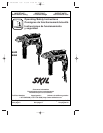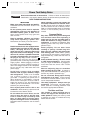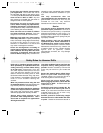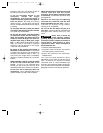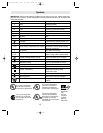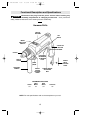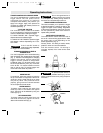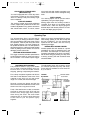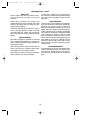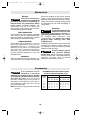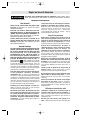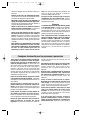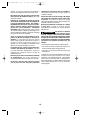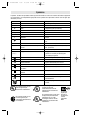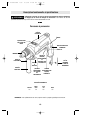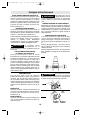
-9-
DRILL BITS
Always inspect drill bits for excessive wear.
Use only bits that are sharp and in good
condition.
TWIST BITS: Available with straight and
reduced shanks for wood and light duty metal
drilling. High speed bits cut faster and last
longer on hard materials.
CARBIDE TIPPED BITS: Used for drilling
stone, concrete, plaster, cement and other
unusually hard non metals. Use continuous
heavy feed pressure when employing carbide
tip bits.
DRILLING WOOD
Be certain workpiece is clamped or anchored
firmly. Always apply pressure in a straight line
with the drill bit. Maintain enough pressure to
keep the drill “biting”.
When drilling holes in wood, twist bits can be
used. Twist bits may overheat unless pulled
out frequently to clear chips from flutes.
Use a “back-up” block of wood for work that is
likely to splinter, such as thin materials.
You will drill a cleaner hole if you ease up on
the pressure just before the bit breaks through
the wood. Then complete the hole from the
back side.
DRILLING METAL
There are two rules for drilling hard materials.
First, the harder the material, the greater the
pressure you need to apply to the tool.
Second, the harder the material, the slower the
speed. Here are a couple of tips for drilling in
metal. Lubricate the tip of the bit occasionally
with cutting oil except when drilling soft metals
such as aluminum, copper or cast iron. If the
hole to be drilled is fairly large, drill a smaller
hole first, then enlarge to the required size, it’s
often faster in the long run. Maintain enough
pressure to assure that the bit does not just
spin in the hole. This will dull the bit and greatly
shorten its life.
DRILLING MASONRY
Soft materials such as brick are relatively easy
to drill. Concrete however, will require much
more pressure to keep the bit from spinning.
Be sure to use carbide tip bits for all masonry
work.
Operating Tips — cont.
SM 2610993480 7/00 8/3/00 12:40 PM Page 9



